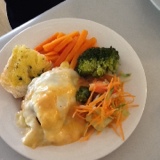Information
-
Document No.
-
Audit Title
-
Client / Site
-
Conducted on
-
Prepared by
-
Personnel
Purchasing/Receiving
-
Trucks delivering food are clean, fully enclosed and refrigerated where applicable.
-
All products are inspected upon delivery for: <br>-Intact packaging<br>-No evidence of temperature abuse<br>-No evidence of spoilage or infestation
-
Receiving staff check that all refrigerated, fresh perishable food is received at 41°F/5°C or below and that frozen product is solidly frozen with no evidence of thawing or temperature abuse. A receiving log is maintained.
-
Foods that are temperature dependant (refrigerated or frozen) are moved to storage first and not left out at room temperature for more than 30 minutes.
Dry Stores
-
Products are rotated to ensure FIFO
-
Products that have been opened are stored in clean, covered containers and labelled with product name and date.
-
Products are stored at least 6" off the floor.
-
Cleaning supplies and chemicals are stored separately from food items.
-
Expired products immediately separated from general storage and returned for credit or destroyed: no out of date products are used.
All Fridges
-
Products are labelled, dated and rotated to ensure FIFO
-
Refrigerators have two properly functioning thermometers.
-
Refrigerator temperature is 40°F/4°C or below. Log complete.
-
Products are stored at least 6" off the floor.
-
Prepared or partially prepared refrigerated foods: are stored separately from raw products; above raw foods or those being thawed for production.
-
Expired products immediately separated from general storage and returned for credit or destroyed: no out of date products are used.
All Freezers
-
Products are labelled, dated and rotated to ensure FIFO
-
Freezer has properly functioning internal thermometer.
-
Freezer temperature is 0°F/-18°C or below. Log is complete and accurate.
-
Products are stored at least 6" off the floor.
-
Product is solidly frozen.
Facilities and Equipment
-
Surfaces and equipment are cleaned and sanitized between uses, for different categories (eg. Poultry/ beef) or whenever soiled.
-
Hand washing sinks are accessible to all food service areas, with hot water, dispensed soap and single use drying devices.
-
No smoking, eating, gum chewing or drinking is permitted in food preparation or service areas.
-
Thermometers used to monitor food and equipment are calibrated weekly.
-
Soiled linen is stored in proper containers away from food.
Preparation and Service
-
Frozen product is thawed by approved method: under refrigeration, cold running water, or as part of the cooking process.
-
Internal cooking temperatures are monitored and recorded.
-
Are foods cooled to 70°F/21°C within 2 hours?
-
Fruits and vegetables are washed thoroughly.
-
Kitchen knives are cleaned and sanitized after each use and stored in a safe, sanitary manner.
-
Prepared food is cooled to 40°F/4°C within four hours and times/ temps are recorded.
-
As soon as preparation is complete food is refrigerated, cooked, or served as appropriate. Done in small batches to decrease contact at room temperatures.
-
Samples of all potentially hazardous foods are kept labelled, dated, and refrigerated for four days or frozen for 7 days.
-
Temperatures of hot foods held for service are 140°F/60°C or above and monitored every hour and recorded.
-
Temperatures of cold foods held for service are 40°F/4°C or below and monitored every hour and recorded.
-
Leftovers are appropriately used and reheated. Reasonable turnover rate.
-
The two spoon method is used for taste-testing food.
-
Served food is covered (individually or with closed carts) during transport.
-
Utensils/equipment is used to prepare and serve food. (Direct use of hands is avoided).
Staff
-
If food service staff wear disposable gloves when preparing and handling raw or ready to eat foods, gloves are changed and hands are washed frequently.
-
Food handlers who have infectious diseases, or infected cuts or sores are excluded from handling food or foodservice equipment.
-
Food service staff comply with dress code- clean uniform, and safe footwear, clean aprons worn, no nail polish, no artificial nails.
-
Food service staff have ALL hair and beards suitably covered.
-
Food service staff wear no jewellery (rings, earrings, necklaces, bracelets, watches or body piercings) NOTE: plain wedding band and medical alert bracelets excepted.
-
Proper hand washing procedures are followed by all employees.
-
All food services staff have received annual food safety training.
-
Staff do not store personal items in preparation or service areas.
-
Food for staff consumption is not stored with the facilities foods.













